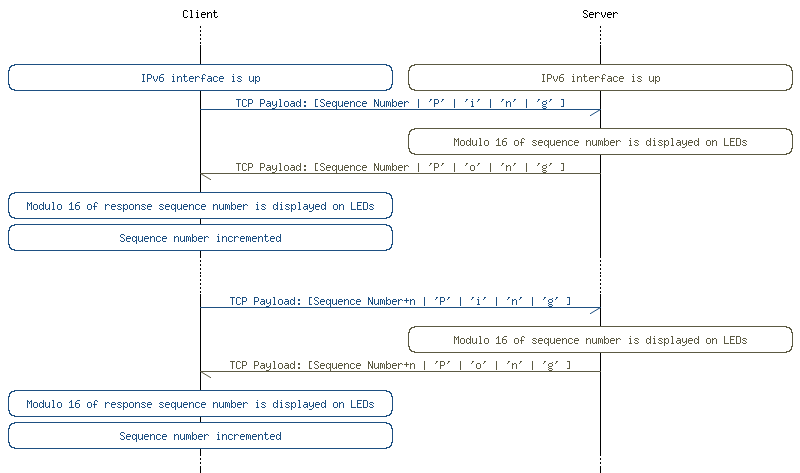 |
nRF51 IoT SDK
|
 |
nRF51 IoT SDK
|
Transmission Control Protocol (TCP) is one of the core IP Protocols. It is a connection oriented protocol and provides reliable transport. This reliability comes at the cost of control packets overhead of the protocol itself, making it unsuitable for bandwidth constrained applications.
To demonstrate TCP protocol support on nRF51, lwIP stack is used. Nordic's stack does not currently support TCP.
As TCP is used as transport for the application, the actual physical transport used to communicate between TCP server and client does not matter as long as they are reachable at IPv6 level. Figure 1 below emphasizes on this fact by showing that the complementary role for nRF51 TCP server or client could be PC applications.
The TCP client acts as an echo client sending requests to which the TCP server responds as demostrated in the MSC below.
